|
|
|
|
| Last Update: 5th July 2000 | |||||||
| About MERLIN |
Astronomy at Jodrell Bank began in December 1945, when Sir Bernard Lovell installed ex-military radar equipment at Manchester University's botanical research station in the Cheshire countryside. From these small beginnings the observatory has grown to a total of eight telescopes, including the 76-metre Lovell telescope at Jodrell Bank and the MERLIN array of smaller telescopes distributed over England. 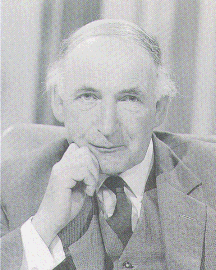 Sir Bernard Lovell. The earliest work was the study of meteors by using radar techniques developed during the war. This led to the discovery of the new meteor streams and their identification with debris spread around the orbits of comets. The radar work confirmed that all meteors were members of our solar system. 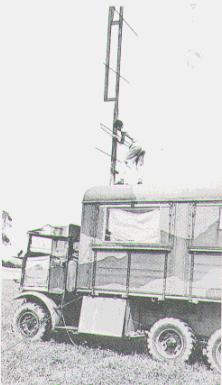 Adjusting a radar aerial during early meteor experiments in 1946. But Lovell and his colleagues gradually shifted their attention from meteors to cosmic radio waves coming from the Milky Way and beyond. This work grew to dominate the activities at Jodrell Bank, and helped establish radio astronomy as a revolutionary method of investigating the universe. Until then astronomers had worked almost entirely with visible light, the narrow band of the electromagnetic spectrum to which our eyes are sensitive. In the 1930s Karl Jansky, an American engineer, discovered radio waves coming from the sky, but few scientists paid much attention at the time. This emission, which is now known to range in wavelength from millimetres to tens of metres, is extremely weak, and Lovell realised that very large aerials would be needed to study it.  The transparency of the atmosphere to electromagneitc waves. Apart from visible light, only radio waves reach the ground. In 1947 Lovell's group built a fixed 66-metre parabolic reflector of wire strung on poles, pointing vertically upward. Although the reflector was immovable, it could be partly steered by tilting the aerial at the focus. With it, they found that radio waves were also coming from M31, a nearby galaxy similar to the Milky Way, a discovery that inspired Lovell to lay plans for an even more powerful telescope. Designed by sir Charles Husband, the Sheffield engineer, the new telescope had a solid steel bowl 76 meters in diameter and was steerable to any point in the sky. It was known as the Mark I Radio Telescope. By the time it was finished in 1957, radio astronomy was flourishing. Large numbers of radio sources were being discovered in the sky, but it was still not clear whether the majority were stars, galaxies, or exotic objects as yet unknown. 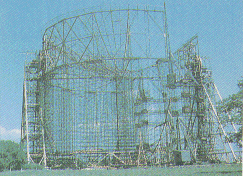 The Lovell Telescope under construction in 1956. 1957 was also the year of the first artificial satellite, Sputnik 1, and the Mark I came into immediate prominence for its ability to track the Sputnik's carrier rocket. It then confirmed to a sceptical world that the Soviet probe Luna 2 had indeed reached the Moon, and later commanded Pioneer 5, the United States'first successful deep space probe. As a result of this work, the outstanding cost of the telescope was met by Lord Nuffield and the observatory was named the Nuffield Radio Astronomy Laboratories. The Mark I is now known as the Lovell Telescope, in honour of Sir Bernard Lovell. 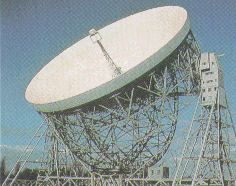 The Lovell Telescope today. But space tracking has always been a minor part of the work of the Lovell Telescope. For more than three decades it has ranked among the most powerful radio telescopes in the world, making vital contributions to the solution of many astronomical problems. In the 1990s the Lovell Telescope will be given a new reflecting surface ensuring that it remains at the forefront of astronomical research well into the next century. 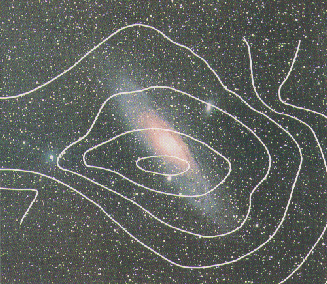 Contours of radio emissions from the nearby galaxy Messier 31. Previous Contents | ||||||
| Newsletter | |||||||
| Highlights | |||||||
| VLBI@JBO | |||||||
| Proposals | |||||||
| Time Awards | |||||||
| Schedules | |||||||
| User Guide | |||||||
Archive
|
Contact |
Email |
|
| ||||